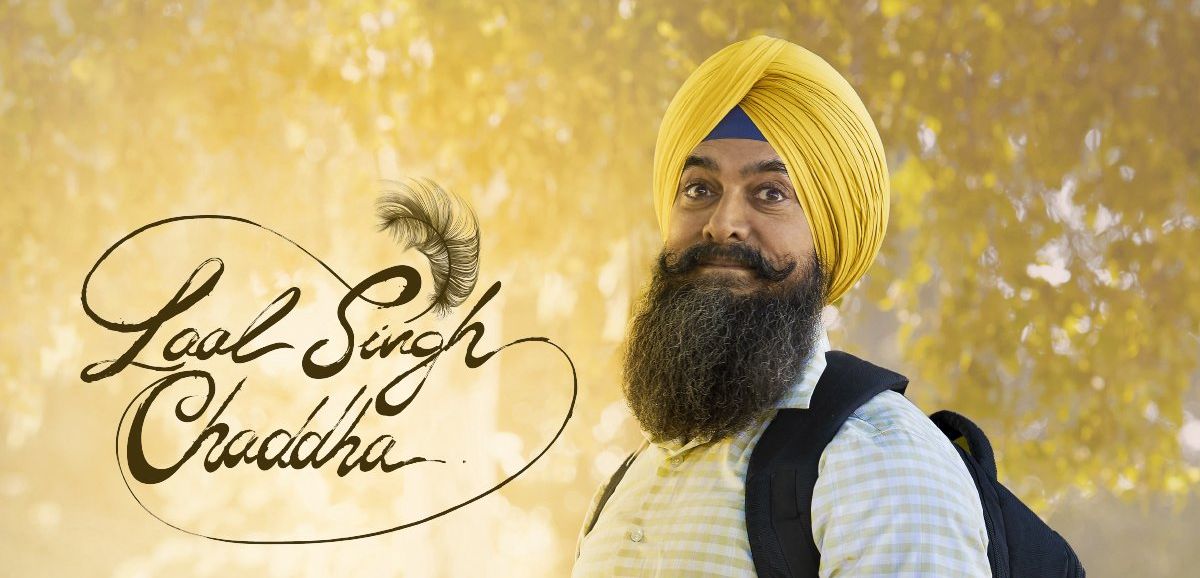There’s plenty of blame to go around for a botched Laal Singh Chaddha, especially from a fan of the visual medium who feels quite let down.

Laal Singh Chaddha poster. (Supplied)
Laal Singh Chaddha
Grapevine has it that Atul Kulkarni, who wrote the screenplay for Laal Singh Chaddha, henceforth referred to as LSC, pitched the idea of the film to Aamir Khan when they were working together in Rang De Basanti (2006).
More than a decade and a half down the line, one would have expected that at least the story of the final product would do justice to the unwitting-man-influences-history leitmotif of Forrest Gump in LSC.
After all, its makers had more than 16 years to adapt the script to Indian sensibilities and events, and yet the film feels like a patchwork quilt of events that is closer in soul to Salman Khan’s eminently-forgettable Bharat than the source material!
Now, before you go shielding second-time director Advait Chandan, note that Rajkumar Hirani accomplished a similar feat by (unofficially) adapting the 1998 Hollywood film Patch Adams to 2003’s Munnabhai MBBS.
But there’s plenty of blame to go around, especially from a fan of the visual medium who feels quite let down. So read on, if not anything else then for schadenfreude’s sake!
On its own LSC aspires to deliver a life-affirming message, and does so to quite an extent.
However, logic takes a hit in several places, and the jumps from one incident to another are so choppy at times that they throw viewers off rather than reeling them in.
Then there’s the use of plot points that go nowhere, or subplots that are mind-numbingly and unconvincingly puerile.
A spoiler warning is now in effect.
Take the example of Rupa — a gangster’s moll — being arrested from Laal’s house, and the police acquiesce to her mere verbal request to not wake him up or disturb him!
Or the fact that while Laal’s mother continues to refer to violence as “malaria” even on her death bed to shield him, but — by his confession — told him about the assassination of Indira Gandhi at some point of time, seems a bit off.
Or even events like Sushmita Sen winning the Miss Universe title. That’s why, when an incredulous ticket-checker laughs at Laal’s story on the train, we are left as bewildered: He could just be telling tall tales!
On the acting front, Aamir Khan seems to ham it up in several places, coming across as a combination of the developmentally challenged twin from Dhoom 3 and the alien from PK.
Kareena Kapoor Khan does not deliver a performance to remember, while the others — including Mona Singh, Manav Vij, and Naga Chaitanya — don’t leave much of an impression either.
And that’s not for want of effort. They had all been dealt a raw hand by the story, which never developed their character to the extent that the viewers would care or root for them.
Now, we do not know whether this was the fault of a half-baked story by Atul Kulkarni, or the editing of Hemanti Sarkar, but large chunks of the story seemed to be missing — with one possibility that they had been left on the cutting floor. And yet, the film runs for two hours and 39 minutes.
Pritam’s music and Amitabh Bhattacharya’s lyrics try to minimize some of the damage, but songs can salvage a film only so much.
A special mention, however, needs to be made for the makeup department of the film. The makeup artists do a commendable job of portraying the progression of age throughout the film, slipping up only once or twice.
Once again, I am at a crossroads as to whom to blame for the botched adaptation of what was one of the most anticipated films of the year.
The first difference between Forrest Gump and LSC that comes to mind is how the series of events in the former felt natural, while those in the latter felt forced.
The second is that while Forrest Gump either influenced or was a part of historical events in the US, Laal seems to either stumble into them, experience them, or simply witness them, but rarely — if ever — influences them.
Bits like the “Shit happens” segment or Gump creating an iconic t-shirt design by cleaning his face only add to the Hollywood film.
As for LSC, that aforementioned Miss Universe scene is one of them. The Mandal Commission protests, LK Advani’s Ram Rath Yatra, India’s win at the cricket world cup, and similar instances shown in the film feel less like an integral part of the narrative and more like the makers telling us: “Aap chronology samjhiye.”
Forrest Gump, the film, was a discourse on several topics, including hot-button ones. Jenny’s suffering due to her abusive father, Lieutenant Dan’s changing views of life and acceptance as a double-amputee, the Vietnam war, the narrative around AIDS and the acceptance — or lack thereof — of people with it: They all found a place in a movie.
Not to mention the US’ Project 100,000, where its army sent low-IQ people to fight in Vietnam in the garb of giving employment to people from rural and low-income sections of the population.
LSC, meanwhile, is reduced to a mere “spot the reference” event series that seems to have only Laal as a common thread, and a very flimsy one, at that.
Lost are the opportunities to, for example, show how differently-abled people may overcome physical or mental challenges and live a normal life. Laal does do that for a bit, but Mohammed Paaji is a lost opportunity. And that seems to be the verdict on almost all aspects of the film.

Apr 19, 2024

Apr 19, 2024

Apr 12, 2024

Apr 11, 2024

Apr 11, 2024